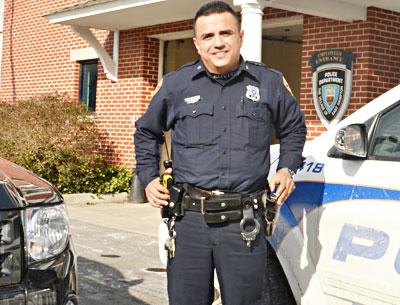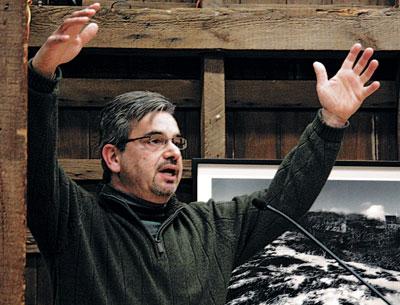Annual Honors for the Top Cops
Annual Honors for the Top Cops

The Southampton Kiwanis Club’s annual celebration honoring the East End’s top cops was held on Friday with a dinner and ceremony in Apaquogue. The evening culminated with the naming of East Hampton Town Det. Tina Giles as the East End’s Officer of the Year.
Ms. Giles is the first woman ever to receive the Howard Stock Memorial Award in its 43 years of being given. She was cited for her pivotal role in the arrest of Fidel Castro-Brito last April, on charges of sexually abusing girls as young as 9 or 10. After the arrest, Detective Giles continued the investigation, which ended with 70 additional charges being pressed.
Fifteen police departments on the North and South Forks are considered for the Stock Award. This was the second time in the past three years that it was given to an East Hampton Town officer. Det. Earl Hopson was cited in 2010 for his work fighting narcotics crime.
Locally, along with Ms. Giles, Officer Mario Galeano of the East Hampton Village Police and David Driscoll of the Sag Harbor force were cited by their departments for excellence in service.
“It was cutting-edge, when [Ms. Giles] got hired, I think in 1986,” East Hampton Town Chief Edward Ecker said on Monday. “In eastern Suffolk there weren’t many women, probably a handful of women in police work at the time. She was the first woman detective. She has always been very productive, community-oriented.”
Reminded that Detective Giles is contemplating retirement, the chief groaned. “I don’t want to think about it,” he said. “She is a seasoned veteran who has done a fantastic job for you. She’ll be sorely missed whenever she decides to go.”
“I don’t think I deserve so much attention. The community itself deserves the attention,” Officer Galeano said. He was cited for an investigation that led to the arrest and conviction of Kleber Sigcha of East Hampton on the charge of raping a minor.
Both Mr. Galeano and Ms. Giles speak Spanish, something that Officer Galeano feels is essential in East Hampton, with its changing demographics. “Sometimes we have cases where it’s hard to solve them,” Mr. Galeano said, “but someone talking in Spanish helps them, takes it to a different level . . . instead of having a third person, a third party translate for you, and translate back to the police officer. Having us around makes it easier. One, we already know what we’re talking about. Two, we build a communication with this person, we build a trust. We are able to see them face to face. Plus, it helps the community.”
Sag Harbor Chief Tom Fabiano lauded Officer Driscoll, citing his initiative during Operation Nite-Cap, a countywide program that sent officers to different jurisdictions to patrol for drunken drivers.
Officer Driscoll is the kind of officer who “sees something and takes action,” said Chief Fabiano.






